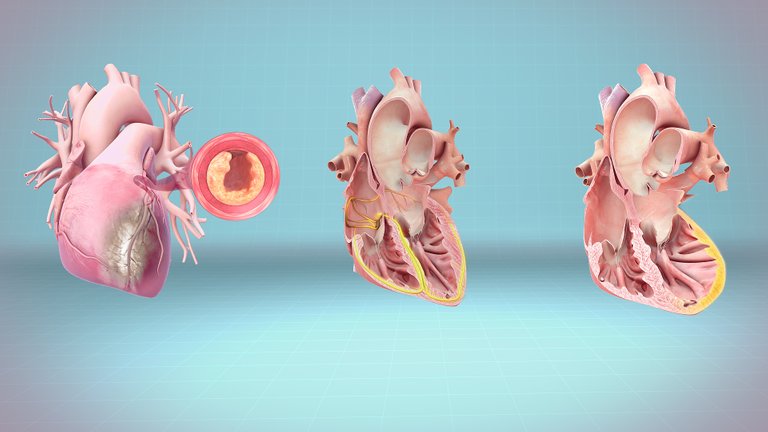Atherosclerosis and Plaque Buildup in Ischemic Heart Disease
Ischemic Heart Disease, often referred to as a heart attack or myocardial infarction, stands as the leading cause of death globally, surpassing even cancer, car accidents, and strokes. It's no surprise that the phrase "do not give me a heart attack" is a common expression in Nigeria, used by many to convey their desire for a stress-free existence.
Heart attack is caused by atherosclerosis or plaque buildup in the arteries. Where there are arteries that supply blood to the body, the heart has its own arteries known as the coronary artery. Its job is to deliver blood and oxygen to the heart itself. Remember that the heart is a working muscle that works from the day you are born till the day you die, and a heart attack occurs when the coronary artery is blocked stopping oxygen, and blood from getting to the heart. The artery isn't that large in diameter as it is about 4 millimeters in diameter, and can be blocked when the arterial wall ruptures as a result of plaque buildup within the wall.
When there is a rupture, clotting occurs to prevent blood from being lost but in doing this, blood flow is prevented. Plaques can get into the blood vessels via Low-Density lipoprotein Cholesterol and inflammation of the blood vessel. Cholesterol, found in red meat, butter, baked foods, and fried foods, is a sticky fatty lipid required for the development of cell membranes and vitamin D production. It can be gotten through diets but can also be made in the liver in the case of low dietary supplies.
Due to its non-polar nature, cholesterol must be transported in the bloodstream by lipoproteins. There are two main types of lipoproteins: High-Density Lipoprotein (HDL) and Low-Density Lipoprotein (LDL). They differ in their transport functions, with HDL shuttling cholesterol to the liver for conversion into bile and LDL ferrying cholesterol to various cells throughout the body. LDL, due to its extended presence in the bloodstream, can get ensnared in arterial walls, thanks in part to the presence of endothelial cells that line the arterial walls, helping to withstand pressure and maintain fluid balance.
Over time, these endothelial cells can become damaged, often due to inflammatory agents, leading to endothelial dysfunction. This dysfunction allows fat to accumulate within the arterial walls. LDL can then become oxidized by free radicals, causing macrophages to engulf the LDL particles, forming what is known as foam cells. These foam cells contribute to the development of plaque within the arterial walls.
When a heart attack occurs, the heart doesn't receive enough blood, and at this point in time, the survival of the patient is determined by how the responsiveness of the emergency team. It is funny how young people now have atherosclerosis, in fact, findings have shown that it can occur in infants whose mothers smoked as well as in mothers who consumed high cholesterol diet during pregnancy. While it is true that it is extremely rare to have a heart attack as a child, the first plaque you might get in your artery could have started from your childhood as a result of your choice of food and lifestyle.
Reference
https://www.who.int/news-room/fact-sheets/detail/the-top-10-causes-of-death
https://www.ncbi.nlm.nih.gov/pmc/articles/PMC2644569/
https://www.cdc.gov/cholesterol/ldl_hdl.htm
https://www.nhlbi.nih.gov/health/heart-attack
https://www.ncbi.nlm.nih.gov/pmc/articles/PMC2826222/
https://www.heart.org/en/health-topics/cholesterol/hdl-good-ldl-bad-cholesterol-and-triglycerides

Thanks for your contribution to the STEMsocial community. Feel free to join us on discord to get to know the rest of us!
Please consider delegating to the @stemsocial account (85% of the curation rewards are returned).
Thanks for including @stemsocial as a beneficiary, which gives you stronger support.
Congratulations @thomisin! You have completed the following achievement on the Hive blockchain And have been rewarded with New badge(s)
Your next target is to reach 4000 upvotes.
You can view your badges on your board and compare yourself to others in the Ranking
If you no longer want to receive notifications, reply to this comment with the word
STOPCheck out our last posts: